Last Updated on July 27, 2024 by Jason
The dream of every vintage watch collector is to come across a watch in pristine condition, as if it has never been worn or left its box. It is possible with New Old Stock (NOS), which refers to a vintage watch that was never sold to a customer and is still in its original packaging. The total condition of the watch is 100%. It is extremely rare to come across a genuine vintage watch that is considered New Old Stock.
However, perfect condition, rather than the be-all and end-all of vintage watches, is more like an added bonus. What is really important and what really makes a vintage watch unique and valuable is the work that went into making it and the history behind it. Originality is the key thing that most vintage watch collectors are looking for because it underlines the character of the watch.
To discover exactly what is meant by originality, we’re going to discuss several factors that are key for vintage watches.
1. Original dial
The dial of a watch makes up the vast majority, if not all, of its value. After all, it is the “face” of the vintage watch that makes the first impression on the viewer. Therefore, finding a vintage watch with an original, untouched dial is going to significantly increase its worth and rarity.
When the dial has been restored, it detracts from the value of the watch due to the loss of originality. If it has been re-painted or touched up, it easily loses a substantial amount of its value. Often, the re-paint will not be as accurate as the original, and may even end up marginally misprinted. It pays to have a trained eye view the watch. This is unless you’re buying from a respected and authorised vintage watch dealer, who can vouch for authenticity.
2. The case material
Vintage watch cases that are made from solid gold, platinum, and stainless steel are what are generally most desirable. Silver was a popular choice for antique watches, but has fallen out of favour in recent times. As a result, there are also many easily worn and less desirable gold-filled, gold-plated, and chrome-plated watches on the market, which, at times, can be difficult to spot.
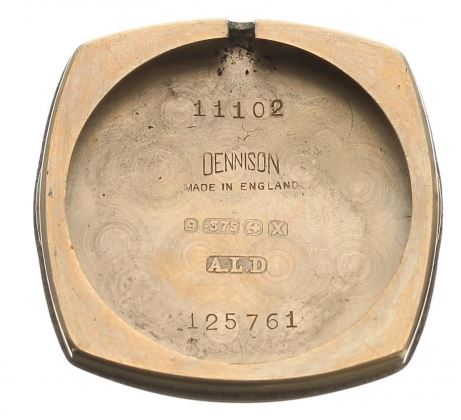
To find out what type of metal a watch’s case is made from, look to see if there are marks on the inside or outside of the case back. Stainless steel watches will generally say, “STAINLESS STEEL” or “ACIER INOX”. Whilst, solid 14k or 18k watches will have respective hallmarks with the associated amount of gold (0.585 for 14k or 0.750 for 18k). The remaining metals will be copper, silver, or zinc, which are added to increase durability and alter the colour of the gold alloy. Platinum-cased watches will also be marked, often with a hallmark (typically 0.950).
3. Serial Numbers
As a general rule of thumb, a vintage watch’s serial number should correlate in date to the year its movement was made. However, there are some cases in which the movement was made much later. In either case, you can check by running it through one of the various databases online. Note, that many watchmakers went out of business due to due to the Quartz crisis in the 1970s and 80s and as a result online records are not available. This might surprise some newish vintage watch collectors who don’t recall life before mobile phones and the internet! I certainly do… showing my age.
If the serial number is available online as it is for watchmakers such as Omega and Tissot, checking the serial number will help you confirm the watch’s authenticity and originality. With it, you’ll be able to find out more information on the watch, including how rare it is and how it should look in its original state.
4. Inscriptions
Although many avoid vintage watches with inscriptions on the case back, they can help to tell the story of the watch and provide a clearer picture of its life and origins. There are many watches out there with long service inscriptions, unless it is a very rare timepiece or a historically important figure, these are best avoided.
This is important as, as well as being original and authentic, rare vintage watches are also those with historically rich backgrounds. Discovering a watch that played a role in a significant date in history or that was on the wrist of an important figure for a decade can make a watch infinitely rarer and more special. Personally, I am not a fan of inscriptions on vintage watches, unless they are heirloom pieces.
5. Documentation
Having original papers and the original box adds value to a watch without doubt. However, it is far preferable to own an authentic vintage timepiece without documentation than to settle for a mediocre watch with a complete set of papers.
Watches accompanied by documentation can pose a few drawbacks. For one, there’s always the lingering doubt of whether the documentation itself might be counterfeit. Additionally, watches with extensive documentation might have been owned by individuals overly fixated on their timepieces, perhaps excessively polishing the cases or opting for refurbishment rather than authentic repairs.
Opting for an original vintage watch without the accompanying paperwork isn’t as risky as some might assume. In fact, it can be a great way to acquire a genuine and exceedingly rare vintage watch without the hassle and uncertainty associated with extensive documentation.
6. Patina vs damage
Patina is a word frequently used in watch-collecting circles. While it may be used in connection with the nicks and scratches picked up by a watch case during its lifetime, it usually refers to the condition of the watch dial. Patina, in reference to the dial, is the discolouration due to age, sometimes caused by sunlight or humidity. This can create an attractive and unique effect on the dial testament to its age and use. A popular example is the so-called ‘tropical dials‘ where the original black colour has turned various shades of brown due to sun exposure. This conjures up an idyllic image of a life spent on dive boats in the tropics.
Care must be taken not to confuse patina with damage. It is only a question of degree as to where attractive ageing becomes irreparable damage. The fashion for patinated dials is relatively recent and no one knows how watch dials will continue to age over time. Be aware that not all brown dials are related to ‘tropical’ ageing. Rust can be the same colour and if there is rust on the dial, the movement may be damaged.
7. Accuracy
The field of horology is undergoing a continuous state of advancement, and it’s widely acknowledged that modern mechanical watches generally offer greater accuracy compared to their vintage counterparts. However, it’s important to note that vintage watches can be adjusted to operate within their original tolerances, rivalling the precision of modern timepieces. However, achieving this level of accuracy often demands regular maintenance and regulation.
In today’s digital age, where precise timekeeping is readily available at our fingertips through smartphones and computer screens, the allure of vintage watches lies not solely in their precision but rather in their nostalgic design elements and historical context. These timepieces serve as reminders of a bygone era, capturing the craftsmanship and storytelling of generations past.
8. Hands, crystal and crown originality
The hands, crystal, and crowns of a vintage watch routinely wear out or fail. You only have to drop a vintage watch onto a hard surface and all three can be damaged in a single blow. For many vintage watches, this event could have happened a number of times. Typically, watchmakers keep drawers of crystals, watch hands, and crowns in stock for this reason. The typical vintage watch could have been serviced by a number of watchmakers in its lifetime. During servicing, it is not uncommon for a watch’s hands, crystal, and crown to have been changed.
Depending on the watch model, the replacement crystal, watch hands, and crown may be generic in nature and virtually indistinguishable from the original. However, some models have known fixed attributes and markings that reflect the originality of the crystal, crown and hands. It is incorrect to assume, for example, that all Omega watches will have an Omega-branded crystal or crown or that all military watches have military markings.
9. Replacement parts
The obsession that collectors have with, for example, branded watch crowns has sometimes creates the opposite effect. Sellers are driven to replace a correct unbranded crown with a branded crown that was never originally sold with the watch. This is also seen with buckles. A seller might add an Omega or Longines branded buckle on an older watch and claim it as “original”. Often, this is false, because, in fact, the manufacturer never used or manufactured such buckles during that era. In general, when considering a vintage watch, take the watch as the sum total of all its attributes. Also, keep in mind that a watch is a mechanical tool that is used on a daily basis. Like all mechanical tools, they break down and require servicing.
A leather strap on a watch that is used daily, is only likely to last a couple of years. The winding crown on a manual wind watch might last a lifetime with careful use. However, it might break in a decade if not wound correctly. The crystal lens on a vintage watch will only survive if it isn’t dropped from a height or subject to sudden shock. This means the crystal could be original after a century or perhaps replaced after only a week.
Buckle, lens and crown
For collectors, the buckle is the least important component in terms of originality. This is followed by the lens and then the crown. Personally, I have never been particularly concerned about the buckle. If it is original, great, but otherwise, I will take what is offered. Likewise, the lens or crystal is not critical to me. Glass breaks, so it wouldn’t be unexpected for a vintage watch to have a replacement lens. The crown I would now consider to be of more importance when making a purchase decision. A signed crown is an indicator of someone who has taken care of their watch.

10. The lume
Many vintage watches have painted luminous hands and hour markers, particularly Rolex and Omega pieces. Over the years the lume deteriorates and can darken, which can look really great. This is effectively patina. The luminosity also fades to the point where it no longer offers any light. It was quite common in the past for the luminous markers to be repainted during a service in the past. This can significantly affect the value of a watch. Remember that in general, up to 90% of the value of some watches is in the dial. Repainted lume can detract from the value of a vintage watch. It is better to have the original, untouched lume, even though it no longer has a luminous quality than to have a repaint.
11. If I don’t know the brand?
Many vintage watch companies which had long histories went under during the quartz crisis in the 1970s and 80s. This was pre-internet, so many of these companies disappeared with few records in place. You need to ask yourself, why am I buying this vintage watch? If it is because you love the look and it is within your budget, then buy it.
If the vintage watch is an investment, then do your research. Obscure watches may have value to some collectors, but ultimately as an investment, it should be a recognised brand. Compare the price of the watch with similar models from other brands or similar watches in the same price range. Make sure the asking price is reasonable based on the watch’s condition and rarity. Ultimately, trust your instincts and go with what feels right for you. If you genuinely love the watch and it meets your criteria, it may be worth purchasing, even if it’s from a lesser-known brand.
Summary
Ultimately, a truly original vintage watch is going to be at the top of any collector’s list. However, some features are less important than others. The dial, movement and crown are definitely important and focus points for genuine collectors. The buckle, lens and strap are generally less important. For collectors buying timepieces as an investment, then overall originality is of the utmost importance. However, if you are just buying a vintage watch, within your budget, as a classic timepiece and you love the look of it on your wrist, then throw caution to the wind and buy it.
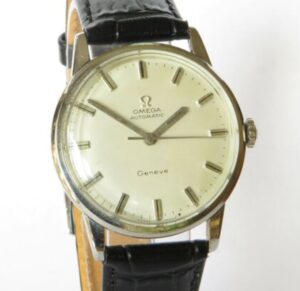
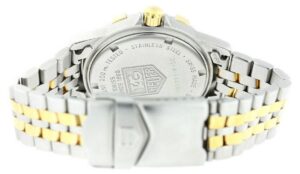
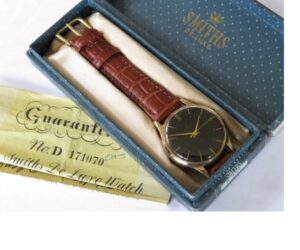
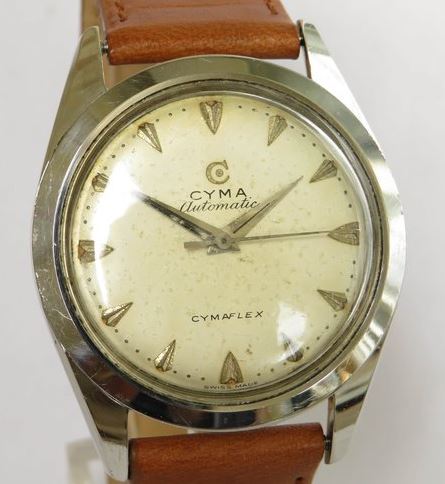

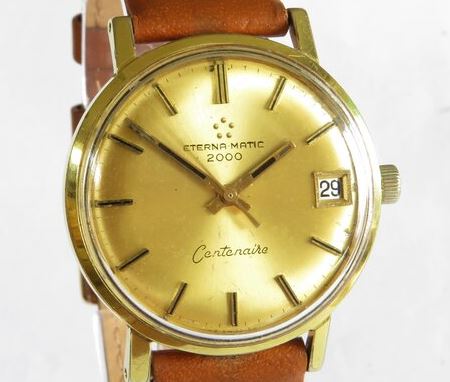

Good points, however where do you draw the line? A great looking vintage watch that has a replacement hand, is that to be ignored? What about a watch that doesn’t have an original crown or strap/buckle?
Hi Yuri, ultimately it depends on what you want to wear on your wrist. Does it have to be 100% authentic? I don’t think so. Original Crowns and buckles are quite often rare, buckles more so than crowns on vintage watches. If you look down at your wrist and you smile, then you have made the right choice. I don’t think I have many watches in my collection that I can say are 100% authentic, but I enjoy wearing all of them. Vintage watch collecting should be fun. I hope you enjoy your collection of vintage watches. Thanks for taking the time to comment, Jason.